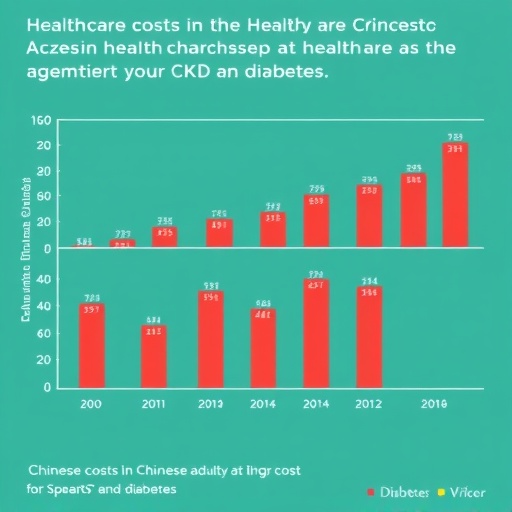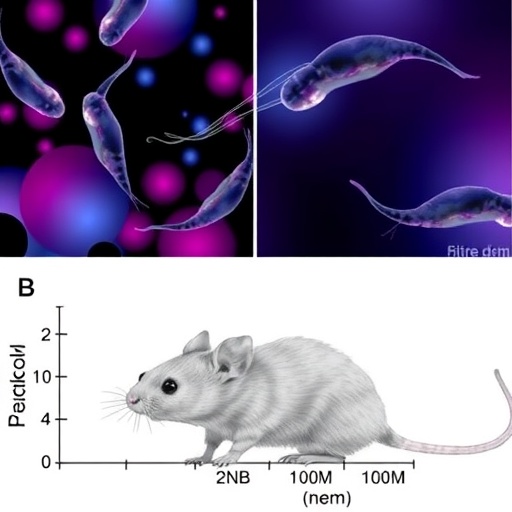
Between the years 1999 and 2021, significant shifts occurred among U.S. adolescents concerning their engagement in risky behaviors and the prevalence of mental health issues. Recent findings reported in a forthcoming issue of the journal Pediatrics, slated for publication in April 2025, reveal a notable decline in risky behaviors such as substance use and violence among this demographic. However, this positive trend masks a concerning rise in the symptoms of depression among a smaller yet growing subset of adolescents. This dichotomy highlights an evolving landscape of youth mental health that demands attention.
The pivotal study, titled “Trends in Mental and Behavioral Health Risks in Adolescents: 1999-2021,” leverages data derived from national biennial Youth Risk Behavior Surveys, curated by the Centers for Disease Control and Prevention (CDC). Through meticulous statistical analyses, the researchers sought to uncover nuances within adolescent behaviors and mental health indicators over more than two decades. The survey involved a comprehensive sample of 178,658 students from grades 9 through 12 across the United States, providing a rich tapestry of insights pertinent to wellbeing in this age group.
Results unveiled from this rigorous examination confirm a compelling trend: an increasing proportion of adolescents have moved away from various risky behaviors, including drug and alcohol use as well as violent actions. Interestingly, the study delineates a correlation between these declines and the absence of associated mental health symptoms, suggesting that the majority of youth are navigating their formative years with decreased engagement in harmful activities. This indicates a positive cultural shift that may reflect heightened awareness and interventions aimed at promoting safer environments for adolescents.
Nevertheless, the findings are tempered by an unsettling upward trajectory in the number of youths reporting symptoms of depression and hopelessness. Researchers found that less than nine percent of the surveyed population exhibited heightened mental health concerns, which typically manifested as feelings of despair and, in extreme cases, suicidal ideation. This subset highlights a critical area of focus for mental health practitioners, policymakers, and educators aiming to bolster the support systems available for youths grappling with such struggles.
Led by Rebekah Levine Coley from Boston College’s Lynch School of Education and Human Development, the research emphasizes the necessity for targeted public health initiatives. Coley, alongside Jane Leer from San Diego State University and Ph.D. candidate Lindsay Lanteri, advocates for increased awareness regarding these underlying issues. Their work provides essential implications for the development of intervention strategies tailored to meet the needs of adolescents experiencing dual challenges of mental health and risky behaviors.
The interplay between decreased engagement in risky activities and the rise in depressive symptoms compels stakeholders to reevaluate current support structures for young people. The data suggest that while a majority of adolescents are successfully abstaining from detrimental behaviors, there exists a vulnerable group that requires focused intervention. It is critical to foster environments that not only reduce exposure to risk but also address the mental health needs of those who are suffering internally.
Coley articulates the significance of these findings, noting that the increasing prevalence of adolescents with low internalizing behaviors, who are simultaneously avoiding multiple health risks, is noteworthy. However, the trend of rising depression rates cannot be overlooked and emphasizes the urgency for proactive measures. Policymakers and mental health professionals are thus called upon to consider these contrasting dynamics seriously and design programs intended to optimize the overall wellbeing of youth across the nation.
In addition to the public health implications, the research underscores an urgent need for greater understanding and destigmatization of mental health issues among adolescents. As rates of depression grow, it becomes evident that educational institutions, communities, and families must commit to creating accessible mental health resources. Efforts to promote open dialogue around mental wellness can significantly mitigate feelings of isolation and hopelessness that often accompany psychological struggles.
The comprehensive nature of the data analyzed is crucial to understanding the potential long-term ramifications of these trends. As adolescents transition into adulthood, those with unresolved mental health issues may face more severe challenges, including adverse educational outcomes and decreased quality of life. Addressing these concerns now serves not only to assist individuals in crisis but also acts as a preventative measure for future societal challenges related to mental health.
An additional layer of complexity is added when considering intersectionality within the adolescent population. Factors such as socioeconomic status, race, and access to healthcare can dramatically influence the mental health landscape. Tailoring mental health initiatives to account for these intersecting facets will be essential in fostering environments where all youths feel supported and empowered.
In summary, this research serves as a critical touchpoint in the ongoing discourse surrounding adolescent health. The juxtaposition of declining risky behaviors against the rising tide of depressive symptoms calls for a meticulous approach to youth welfare. Engaging adolescents in meaningful conversations about mental health, creating robust support mechanisms, and implementing evidence-based interventions will be vital steps in nurturing a healthier future generation.
Moving forward, the insights gleaned from this study will fuel continued exploration and dialogue on the mental health needs of young people. As public awareness grows, it is hoped that renewed focus on mental wellness among adolescents will reflect in policy changes and enhanced community supports. The combined efforts of researchers, educators, and mental health professionals will be the cornerstone in championing the mental health and wellbeing of the nation’s youth.
Subject of Research: Adolescents’ mental and behavioral health trends
Article Title: Trends in Mental and Behavioral Health Risks in Adolescents: 1999-2021
News Publication Date: March 18, 2025
Web References: http://dx.doi.org/10.15442/peds.2024-068774
References: None provided
Image Credits: None provided
Keywords: Adolescents, Mental Health, Risky Behavior, Depression, Public Health, Youth, CDC, Wellbeing, Intervention, Substance Use, Education, Policy
Tags: adolescent risky behaviors trendsbehavioral health in adolescentsCDC Youth Risk Behavior Survey findingsevolving landscape of youth mental healthlongitudinal study on adolescentsmental health challenges for teenagersrising depression symptoms in youthrisky behavior reduction in adolescentsstatistical analysis of adolescent health datasubstance use decline among teenstrends in adolescent wellbeingyouth mental health issues





